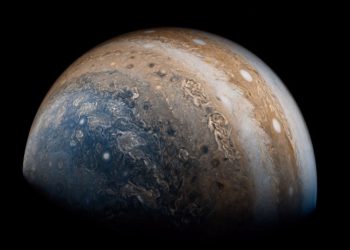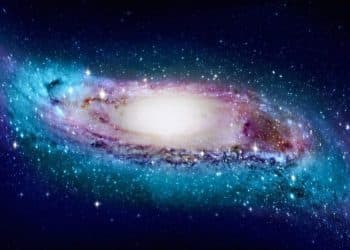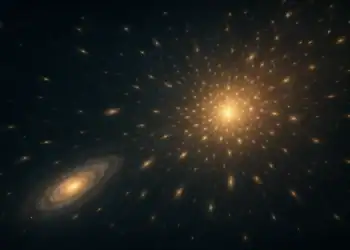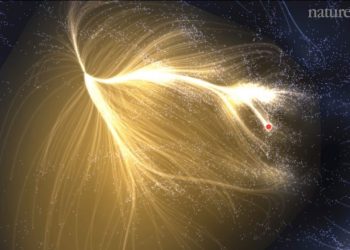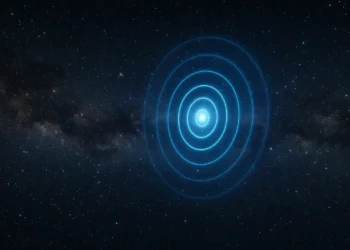There is a crater in Australia, three kilometers wide, where a meteor once slammed into the Earth some 50,000 years ago. The impact left a scar. But what it might have delivered is harder to see, amino acids, carbon compounds, or even microscopic passengers older than our planet. This one did not, but others did.
Life from space?
For as long as we’ve been asking where we come from, we’ve told ourselves the same story. That life began here, on our own little planet, circling the Sun. We’ve imagined lightning striking a pool of chemicals, triggering something strange and new. Cells formed, and over time, they became everything.
It’s a simple idea. Clean. Maybe even comforting. And maybe it’s true.
But not everyone is sure anymore. In research labs and observatories across the world, some scientists are starting to think the story might go back farther. And begin somewhere else entirely.
What if life, or the raw materials it’s built from, didn’t start here? What if it arrived from space, carried on a rock or frozen inside a comet?
If that’s the case, then we’re more than just creatures of Earth. We’re shaped by collisions, by wandering debris, by ancient dust that floated between stars long before Earth was ever born.
Maybe we’ve been searching the sky for signs of other life without realizing the most alien thing on this planet might be us.
The forgotten idea that never quite died
The notion isn’t new. It has surfaced and faded for over a century, from the musings of 19th-century Swedish chemist Svante Arrhenius to late-night science fiction. In those early versions, it was a fringe curiosity: spores riding solar winds, microbes hitching rides on comets. Nobody took it seriously.
But the universe is older than Earth by billions of years. And in recent decades, evidence has begun to surface, not of alien life, but of the strange familiarity between life here and the ingredients scattered through space. The basic components we are made of, carbon, hydrogen, nitrogen, oxygen, phosphorus, are among the most abundant elements in the universe. As astrophysicist Neil deGrasse Tyson often points out, the atoms that make up our bodies are the same ones found in stars, gas clouds, and cosmic dust. Life, it seems, is built from common cosmic parts.
This leads me to talk about panspermia. Not a theory about little green men from Mars, but a hypothesis that life, or its chemical seeds, can travel between worlds. Not by design. Not deliberately. Just as a function of physics, collisions, and time. Randomly. Across vast distances. Across an entire galaxy perhaps.
Cosmic Chemistry: Tracing Life’s Ingredients Across the Solar System
In the vast expanse of space, celestial bodies carry the secrets of our origins. Among them, meteorites and comets serve as time capsules, preserving the primordial ingredients that may have sown the seeds of life on Earth.
The Murchison Meteorite: A Treasure Trove of Organic Compounds
On September 28, 1969, the Murchison meteorite fell near Murchison, Victoria, Australia.
Classified as a carbonaceous chondrite, this meteorite has captivated scientists due to its rich organic content. Analyses have revealed over 70 amino acids within its matrix, including both common types like glycine and alanine, and rare ones such as isovaline and other non-proteinogenic amino acids — some of which are uncommon or entirely absent in Earth’s biosphere.
Notably, these amino acids exhibit a mix of left- and right-handed configurations, suggesting an abiotic origin.
Beyond amino acids, the Murchison meteorite contains a plethora of organic molecules: aliphatic and aromatic hydrocarbons, carboxylic acids, alcohols, and even nucleobases like uracil and xanthine. The presence of these compounds indicates that the meteorite harbors a complex suite of life’s precursors, formed in extraterrestrial environments.
Stardust Mission: Capturing Cometary Particles
NASA’s Stardust spacecraft, launched in 1999, embarked on a mission to collect samples from comet Wild 2. In 2004, it successfully captured particles from the comet’s coma using an aerogel collector and returned them to Earth in 2006. Among the findings was glycine, the simplest amino acid, marking the first time such a compound was identified in cometary material. Isotopic analysis confirmed its extraterrestrial origin, bolstering the idea that comets can harbor life’s building blocks.
Rosetta Mission: Unveiling Comet 67P’s Organic Inventory
The European Space Agency’s Rosetta mission, which rendezvoused with comet 67P/Churyumov-Gerasimenko in 2014, provided unprecedented insights into cometary composition. Instruments aboard Rosetta detected a variety of organic molecules, including glycine and phosphorus—key components of proteins and DNA, respectively. These discoveries underscore the potential of comets to deliver essential organic materials to early Earth.
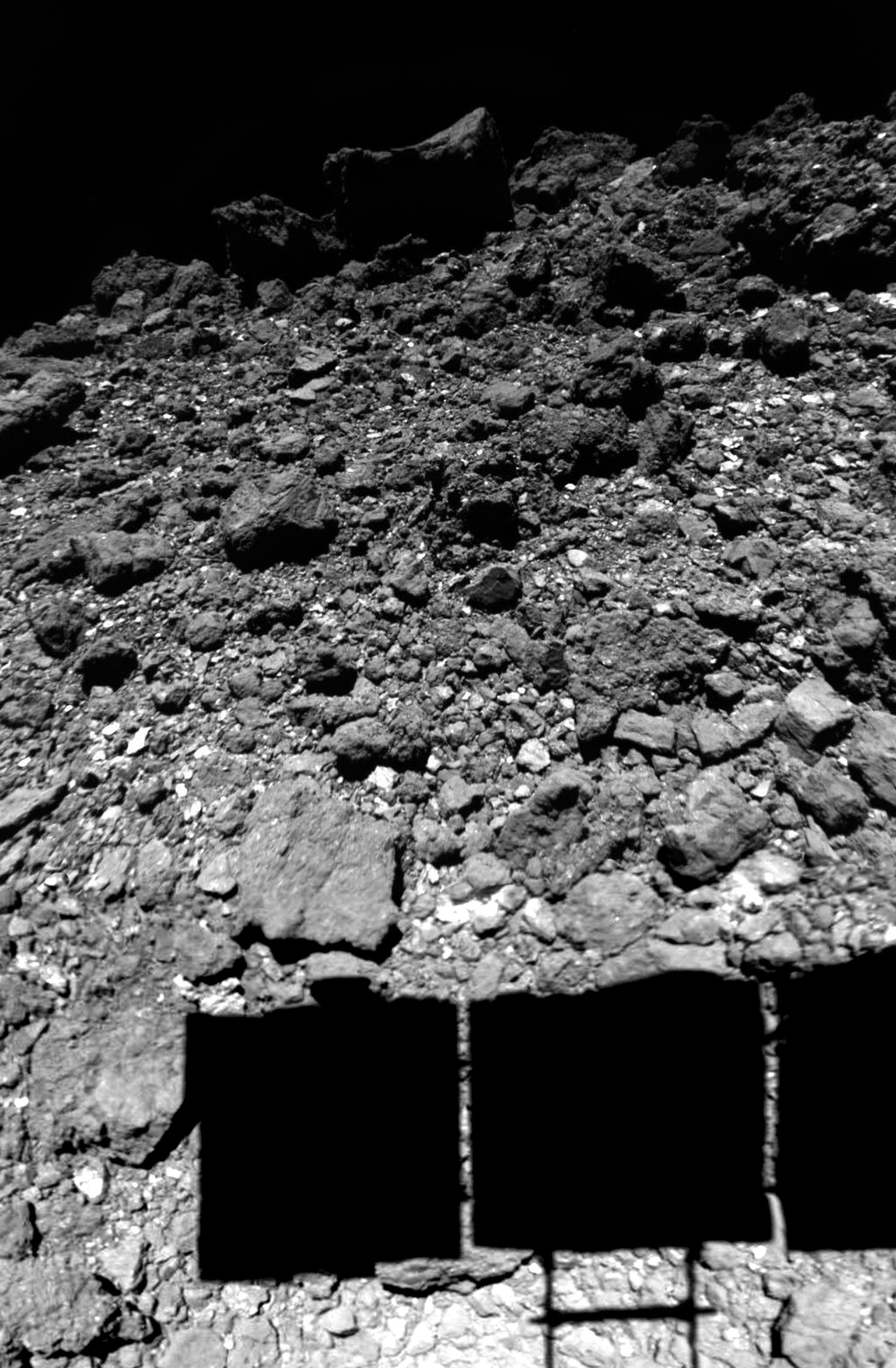
Hayabusa2 and Ryugu: Sampling an Asteroid’s Secrets
Japan’s Hayabusa2 mission targeted asteroid Ryugu, collecting samples and returning them to Earth in 2020.
Preliminary analyses revealed that Ryugu’s material is rich in organic compounds, including amino acids. Nucleobases such as uracil, which play a role in genetic information storage and transfer, have also been detected. However, sugars have not yet been found in the samples analyzed so far. This absence may be due to limitations in sample size or the sensitivity of current analytical methods, leaving open the possibility that these compounds are present but remain undetected.
Implications for the Origin of Life
The detection of life’s building blocks in meteorites and comets suggests that the essential components for life are widespread in the cosmos. These findings support the panspermia hypothesis, which posits that life, or its precursors, can be distributed throughout the universe via celestial bodies. The presence of amino acids, nucleobases, and other organic molecules in extraterrestrial materials implies that the raw ingredients for life are not unique to Earth but are a common cosmic phenomenon.
Understanding the distribution and complexity of organic compounds in space not only informs our theories about the origin of life on Earth but also guides the search for life elsewhere in the universe. But there is one thing that we need to mention, and that is life’s brutal resilience.
Life’s brutal resilience
It’s one thing to find organic molecules drifting through space. It’s another to ask whether something truly alive could make the trip. Could life survive the violent birth of a solar system, the vacuum, the radiation, the cold? Surprisingly, some organisms from Earth suggest the answer might be yes.
One of them is Deinococcus radiodurans, a reddish bacterium discovered decades ago in irradiated meat. It didn’t just survive radiation. It shrugged it off, rebuilding its shattered DNA like nothing happened. That resilience earned it a trip to orbit. Scientists placed colonies of it on the outside of the International Space Station, exposing it to space with no protection. For nearly three years, it endured the vacuum, the extreme temperatures, the constant bombardment of cosmic rays. When brought back inside, many of the microbes were still alive.
Another candidate is the tardigrade, a microscopic animal found in moss and soil. Under a microscope, it looks almost comical, round body, and eight stubby legs—but it’s one of the toughest creatures on Earth. Tardigrades can survive being completely dried out, frozen to near absolute zero, boiled, and exposed to radiation levels that would kill most other life. In 2007, some were launched into space and exposed directly to the environment outside Earth’s atmosphere. When they came back, several were still alive. Some had even laid eggs.
And then there are the extremophiles we’ve found closer to home. Bacteria thriving in hydrothermal vents two kilometers beneath the ocean, where the pressure would crush a submarine. Microbes living in acid pools and under Antarctic ice. Life forms that manage to survive in places where sunlight never reaches and temperatures swing from scorching to freezing.
To researchers, these examples suggest something important. Life doesn’t need ideal conditions. It just needs a foothold. If microbes can survive on metal panels orbiting Earth, or in volcanic water rich in sulfur, then it’s not far-fetched to imagine life surviving on a comet or inside a meteorite. And if it can survive the journey, it might just find a new world where it can begin again.
Earth was ready. Maybe too ready.
Life shows up early in Earth’s story. Almost suspiciously early. The planet itself is around 4.5 billion years old. And yet, not long after the crust cooled and the first oceans formed, we see signs of microbes already at work. The oldest known fossils go back about 3.8 billion years. That leaves a narrow window. Just a few hundred million years, for life to emerge from scratch.
But conditions during that time were anything but peaceful. Earth was still recovering from the chaos of its formation. It was bombarded by asteroids, pounded by ultraviolet radiation, and constantly reshaped by violent volcanic eruptions. The atmosphere was toxic, the surface unstable, and the oceans likely boiling in places. It doesn’t feel like the kind of place where delicate chemistry would have had an easy time stringing itself together.
Which is why some scientists wonder if life really started here at all. Maybe it didn’t begin in Earth’s oceans, but arrived in them.
Imagine a meteorite. Not just a hunk of rock, but one carrying the right molecules, or maybe even something already alive, tucked away in microscopic pores. If that rock hit at the right time, it could have seeded a young planet with the spark it needed. In that case, Earth wouldn’t be the origin point. It would just be the next stop.
That shift changes everything. It means life didn’t climb out of the mud on its own. It means we might be part of something older. It could be a biological thread that began long before Earth had a name.
Critics and cosmic gaps
Not everyone buys into the idea that life came from space. Some scientists are skeptical, and honestly, it makes sense. Panspermia doesn’t tell us how life began. It just suggests Earth might not be where it started. The bigger question, how lifeless matter ever became something that could breathe, move, or think, is still hanging there, unanswered.
Others worry about contamination. A meteorite lands on Earth, sits out in the open, maybe gets touched or stored away for years before anyone tests it. So how do we know the organic molecules inside didn’t come from here? And even when we do find amino acids or sugars out there in space, they might have formed naturally, without any connection to life at all.
And there’s the bigger, quieter question. The one that never really leaves the room.
If life didn’t start here, and we haven’t found it anywhere else yet, what does that mean? Is there a design behind it? A direction? Some people see the patterns in physics and biology and feel like they’re looking at something planned. Others say it’s just chance, layered over billions of years.
I believe in science. I believe in testing things, asking questions, and following the evidence. But I also look up at the sky and wonder where all of this came from. The structure of the universe feels too precise to be random. That doesn’t mean I know who or what might be behind it. But I don’t think it’s all by accident.
A universe that breathes life?
Panspermia isn’t perhaps THE answer. It’s currently more of kind of like a lens. It doesn’t explain everything, but it changes how we look at the pieces. At the universe. At the possibilites.
If life can survive in deep space, if it can travel across light-years tucked inside ice or rock, then maybe life isn’t rare. Maybe it’s everywhere. Waiting for the right moment. Drifting across the dark until it finds the right kind of world.
And maybe that’s what happened here. Maybe the first living cell on Earth didn’t form in a pool of chemicals, but landed here after a journey we’ll never fully trace. A microscopic traveler, older than our planet, from a place we’ll never see.
That kind of idea doesn’t shrink us. It connects us. If life can spread, it means we might not be alone. It means every planet out there with liquid water and sunlight could be a home-in-waiting. It means life could be the rule, not the exception.
And if that’s true, if life moves from world to world, taking root wherever it can, then we aren’t just a product of this Earth. We’re part of something much older. A story that began long before us, still unfolding, still reaching. Ahh, what a beautiful thing the cosmos is!






